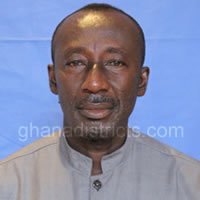EDUCATION:
The important role that education plays in the social, cultural and economic development of a country as a whole and the District in particular cannot be over-emphasized.
In a developing peri-urban District like Kwabre East, the need for skilled manpower is important. The Assembly in the past had directed over 60% of its resources into educational programme and projects.
The educational facilities in the District are as follows; 94 Pre-school, 98 primary schools, 85 JSS and 6 Senior Secondary Schools. All these schools are public schools. There are also private schools in the District.
PARTICIPATION RATES BY SCHOOL TYPES AND SEX
The participation rate is the proportion of the school going age population (6 – 17years) who are actually in school and this is depicted by the table below.
The Gross Primary School enrolment is 110.8 whereas the JHS and SHS are 113.5 and 51.8 respectively. In JHS and SHS levels, gross female participation fall below that of the males.
Trained and Untrained Teachers
As high as 79% of teachers for all the levels are trained. The expectation is to obtain 100% by 2015. The table 15 below shows the number of trained and untrained teachers in the District.
Pupil-Teacher Ratios
The teacher-pupil ratio stands at 20:1, 28:1 and 13:1 for pre-school, primary, junior high school respectively. The ratios looks encouraging, however, there is the need to encourage parents to enroll more children in school to better utilize the teacher in the district. Table 22 depicts the pupil-teacher ratio in the district.
Problems/Gaps in the Education Sector
The following problems were identified to be facing the education sector:
• Lack of teachers accommodation
• Inadequate classroom infrastructure especially in the peri-urban communities.
• Lack of school libraries
• Lack of maintenance of school buildings
• Inadequate dormitories in all the senior high schools.
Date Created : 2/19/2019 6:44:48 AM



